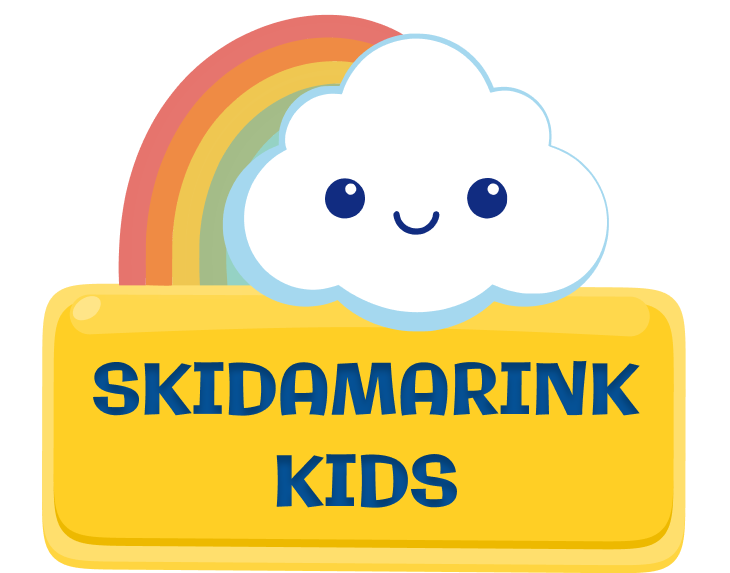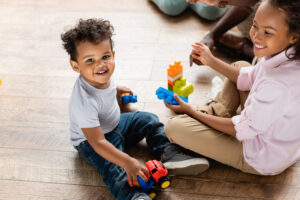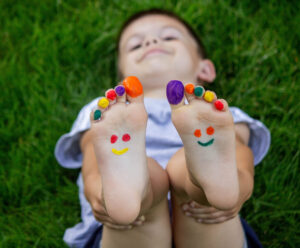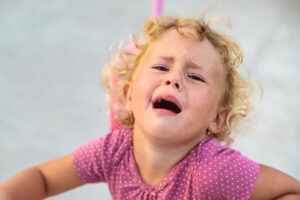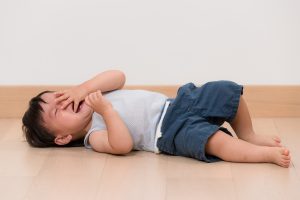Do you ever feel like parenting was somehow easier for previous generations? You’re not imagining things. Child behavior problems that once seemed less common are now showing up in countless families. Parents feel frustrated and wonder what they’re doing wrong.
The truth is, it’s not just about your parenting skills. Something basic has shifted in how childhood itself works. It’s affecting our children’s developing brains in ways we’re just beginning to understand.
When Play Had More Time and Space
I remember a time when childhood had a completely different rhythm. Those long summer afternoons that seemed to stretch on forever. Most of us had something that feels almost foreign now. We had hours and hours of unstructured time to just play.
We had toys, of course, but they were different. Building blocks required us to imagine what we were creating. Dolls came to life through our storytelling. Art supplies turned into masterpieces only we could see. These toys didn’t teach us ABCs or numbers. They taught us something more basic. They taught us how to think, create, and solve problems.
How We Learned and Played
There were fewer “educational” toys designed for toddlers back then. We weren’t learning letters at age two. Instead, we were learning motor skills by climbing. We developed social skills by deciding who got to be “it” in tag. We used our imagination to transform a cardboard box into a spaceship. These experiences were building the foundations our brains needed for later academic success.
Play back then was very social too. We played in groups, with siblings, with neighborhood kids. Yes, our parents engaged with us more during play time. We learned to negotiate and take turns. We learned to handle disappointment when games didn’t go our way. These everyday interactions were building crucial brain connections. These connections help prevent many of the child behavior problems we see today.
Most importantly, play was active and imaginative. We were constantly moving our bodies. We developed balance and coordination naturally through climbing, running, and exploring. Our brains were getting the kind of sensory input they needed. This input helped develop strong foundations for everything that would come later.
Understanding Child Behavior Problems: What's Changed in Childhood
Here’s what’s heartbreaking. We haven’t lost our desire to give our children the best. In fact, we’re probably trying harder than any generation before us. But somewhere along the way, childhood got compressed and sped up.
The number of children struggling with attention problems and ADHD has grown a lot. While child behavior problems certainly existed before, the scale of what we’re seeing today is different. More children are having difficulty with many things. They struggle with focusing and paying attention. They have trouble managing their emotions and behavior. They can’t process sensory input well. They show delays in developing motor skills and body awareness. They struggle with social interactions. They have trouble building strength when things don’t go their way.
Child Behavior Problems: The Modern Childhood Problem
Academic learning now starts earlier than ever. Many toddlers have toys designed to teach letters and numbers. But their brains are still working on much more basic skills. Skills like body awareness and emotional control come first. We’ve filled schedules with structured activities. We think we’re giving our children advantages. But sometimes we’ve accidentally crowded out the very experiences their developing brains need most for healthy childhood development.
Play has become more solitary and passive for many children. Instead of the rich social interactions that used to happen naturally during neighborhood play, many kids spend more time with screens. They use toys that entertain them rather than engage them actively. And here’s the thing. Parenting and discipline styles have also shifted over the years. Those changes play a role too. But for this conversation, we’re focusing specifically on how changes in play are adding to child behavior problems.
The Brain Science Behind the Struggle
When your child can’t seem to listen, or melts down over small things, or struggles to sit still, their brain might not be ready yet. Their brain might literally not have developed the internal systems needed to handle those situations. This isn’t a character flaw. It’s about childhood development and how the how the brain builds self regulation skills.
Self regulation is like an internal control system. It helps us pause, think, and choose how to respond when life gets challenging. It’s a complex skill. It develops only when the brain has the right foundation. That foundation is built through specific types of experiences.
The Sensory and Motor Connection
Your child’s brain is constantly taking in information from their senses. But there are also hidden senses most people don’t think about. The vestibular system controls balance and spatial awareness. Proprioception tells the brain where the body is in space.
When children get plenty of active, movement based play, their brains learn to process all this sensory information smoothly. Climbing playground equipment gives the vestibular system practice. Pushing, pulling, and carrying things develops proprioception. These experiences literally wire the brain to handle sensory input well.
Without enough of this input, some children develop sensory processing challenges. They might be overly sensitive to certain textures, sounds, or lights. They might seek out intense sensory experiences. They might have trouble knowing where their body is in space. They might struggle with coordination. They might find it hard to filter out background noise and focus. These sensory struggles often show up as what we recognize as child behavior problems. But they’re really signs that the brain needs more basic input from active, varied play.
Why Movement Matters for Everything
There’s a natural developmental progression children need to move through. Babies learn to control their head, then roll over, sit up, crawl, and eventually walk. Each stage builds on the previous one. This creates stronger brain connections.
When children skip steps or don’t get enough practice at each level, it can affect everything. It affects handwriting. It affects emotional control. Yes, the same brain pathways that help your child control a pencil also help them control their impulses and emotions.
Movement activities that engage both sides of the body help develop the connection between the left and right brain hemispheres. This connection is crucial for reading and writing skills. It’s crucial for coordinated movement. It helps with processing complex information. It helps with managing emotions and behavior. It helps with social interaction.
The Social Foundation
When children play together, they’re learning so much. They learn to read social cues and facial expressions. They learn to take turns and share. They learn to handle disappointment and frustration. They learn to talk things out and compromise. They learn to express their needs and listen to others. They learn to develop empathy.
These social experiences create neural pathways. These pathways become the foundation for emotional control. Children who have lots of practice working through social situations through play develop stronger skills. They get better at managing their own emotions.
Why Modern Play Falls Short
Many of today’s toys are designed to entertain rather than engage. They light up, make sounds, and do the “playing” for the child. While these toys aren’t harmful in small amounts, they don’t provide the same brain development benefits. Open ended toys that require imagination and active participation work better.
Screen time, while sometimes necessary and even educational, provides a passive experience. It doesn’t give the brain the sensory and motor input it craves. Children can learn facts from screens. But they can’t develop body awareness, balance, or the social skills needed for healthy childhood development through a tablet.
Time and Safety Changes
Structured activities like sports and music lessons are wonderful. But they’re often scheduled back to back. This leaves little time for unstructured, child directed play. That’s where the most important brain development happens.
Free play allows children to direct their own learning. They practice problem solving. They develop creativity in ways that adult led activities simply can’t copy. When children don’t get enough of this type of play, it can add to the rise in child behavior problems we’re experiencing.
Safety concerns have also changed outdoor play. Many parents (understandably) feel nervous about letting children play outside without watching. This is different from previous generations. While keeping children safe is crucial, this shift has reduced opportunities. Children need adventurous, physically challenging play. This type of play builds confidence and motor skills.
There's So Much Hope in Understanding
The beautiful news is that children’s brains remain very adaptable. This is especially true during the early years. When we understand what’s happening, we can make changes that really help our children thrive.
This isn’t about going backward. It’s not about giving up the benefits of our modern world. It’s about purposefully bringing back elements of play that developing brains desperately need.
How You Can Use Play to Reduce Child Behavior Problems Today
Prioritize Movement and Unstructured Play
Even 30 to 60 minutes a day of free play time can make a real difference. Your child should direct the activity. This might mean:
- Playing outside without structure
- Building with blocks
- Engaging in pretend play
- Creating art without a specific goal in mind
Choose toys that encourage active participation:
- Building materials like blocks or Legos
- Open ended toys like play dough or art supplies
- Items that spark imagination like dolls or toy vehicles without electronic features
- Outdoor equipment that challenges the body like balls or climbing structures
Get Physical and Social
Physical play that challenges balance and coordination is crucial:
- Play active games like tag or Simon Says
- Create obstacle courses using household items
- Dance to music together
- Go to playgrounds and encourage challenging equipment
- Add animal walks (bear crawls, crab walks, frog jumps) into daily routines
Make play social whenever possible:
- Schedule regular playdates with peers
- Encourage sibling play by providing activities they can do together
- Join in your child’s play rather than just watching
- Make play a family experience where everyone unplugs, connects and has fun
- Look for community activities that involve group play
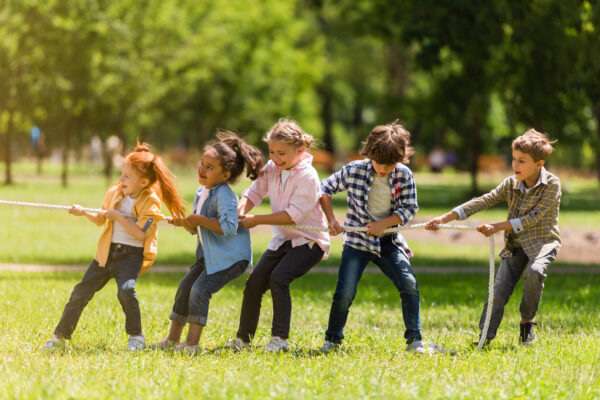
Set Healthy Boundaries
Limit screen time and passive entertainment. This doesn’t mean getting rid of screens completely. But be mindful about:
- Set reasonable daily limits based on your child’s age
- Choose interactive content over passive watching when screens are used
- Balance any screen time with equal or greater amounts of active play
- Make family activities screen free times
Reduce the pressure for early academics:
- Remember that play IS learning for young children
- Focus on building basic skills before pushing academics
- Read books together for enjoyment, not just to teach letters
- Let your child’s natural curiosity guide their learning
Embrace the Mess
Some of the best play is messy play:
- Allow water play, mud play, and sensory bins
- Set up art activities without worrying about the end result
- Let your child help with cooking and household tasks
- Accept that learning through play sometimes means cleaning up afterwar
Do you want to know how to use play to support natural development, check out my blog: “Developmental Play Guide: Reading Your Child’s Behavior” to find activities that support more brain balance.
Watch for Signs You Need Help
If you notice your child:
- Struggling a lot with coordination or balance
- Having extreme reactions to certain sensory experiences
- Avoiding or seeking out sensory input in unusual ways
- Consistently having difficulty with social interactions or emotional control
Consider talking with your pediatrician about your concern and ask for a possible referral to an occupational therapist. Early support through play therapy or other interventions can make a big difference.
A New Way Forward
Understanding how changes in play are affecting our children isn’t about guilt or blame. You’re doing your best with the information and resources you have. The fact that you are reading this blog shows you care about your child.
As parents and as a society, we’ve made choices with the best intentions. We often didn’t understand how they would impact developing brains. I know I did not. Now that we know better, we can make different choices. We can support healthy development. We believed we were giving children advantages by teaching them early. But we didn’t realize we were skipping critical developmental steps.
Want More tips like these? Download Tantrum Tamer: the parenting app trusted by families to support emotional growth, peaceful routines, and happier homes.
We have tips and resources, along with customizable tools, breathing guides and a reward system to help reduce child behavior problems. Download today!
The Power of Small Changes
Small changes in how we approach play, structure, and daily routines can help. These changes help children develop the self regulation skills they need to thrive. By understanding how our modern lifestyle affects developing brains, we can make thoughtful choices. We can help our children develop the way God designed them to.
The choices we make as parents, educators, and as a society truly matter. When we change our approach, we’re not just helping one child. We’re creating positive changes that benefit the whole family. We’re potentially influencing how our society raises the next generation.
The challenging behaviors you’re seeing in your child may be signs that your child’s brain needs more of what brains have always needed. They need movement, social connection, positive support, sensory input, and time to just be a kid.
Want to learn more about supporting your child’s development? Read our companion guide: “Child Self Regulation: The Brain Balance Key to Success” to learn about the specific brain development that happens through play and how you can support it at home and “How to Calm Child Naturally: Brain-Supporting Activities”.
– Kendra
